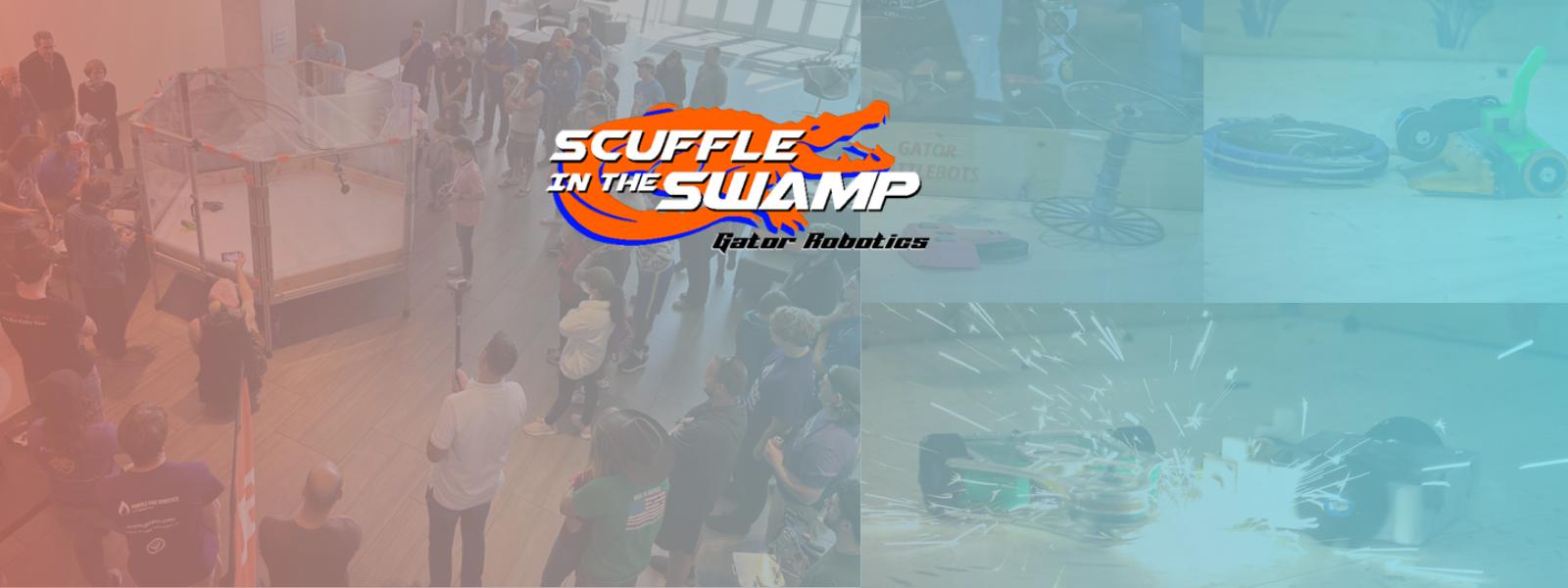The atrium of the Herbert Wertheim Laboratory for Engineering Excellence was transformed into a modern Colosseum on April 9, when mechanical gladiators from all over the state descended on UF for the Scuffle in the Swamp. The first open battlebots event ever to take place at UF, the tournament was hosted by Gator Robotics, a student club that builds robots and competes at events where the remote-controlled machines fight each other to the death.
“We’re very happy to have a good team that was able to run the event very well,” said freshman participant Brooks Silber. “People said, ‘Yeah, this is one of the better events in Florida that we’ve been to,’ especially because of how great the building was, and how much work we put into it.”
In total, 44 robots competed, and the field of engineers who designed and piloted them included college students from UF, Florida Polytechnic University, and the Florida Institute of Technology, as well as some full-time engineers, high school students, and family teams featuring even younger students with their parents. The tournament was conducted bracket-style, and was split into three divisions: 3-pound, 1-pound metal, and 1-pound plastic. The plastic division was primarily intended for newcomers, as the material is generally cheaper, quicker, and easier to work with than metal.
During the bouts themselves, the robots could achieve knockouts by incapacitating their opponents, meaning the loser can no longer move or is clearly broken. In the absence of a knockout within three minutes, the winner is decided by a group of judges who base their decisions on each robot’s level of aggression and damage inflicted on their adversary. Some examples of weapons with which battlebots may be equipped are lifters, grabbers, and spinners, the latter of which are usually chunks of hardened steel that can spin at up to 250 mph at the tips. Gator Battlebots team president Jack Sopotnick described the atmosphere as “electric” during the fights.
Silber and fellow UF freshman Daniel Combes won first and second place, respectively, in the plastic division, and Silber also won the 3-pound bracket with his robot Mechanical Advantage. This was the third consecutive tournament at which Silber has won first place overall, and the final victory brought the vertical spinner-wielding Mechanical Advantage’s win streak to 20 matches.
“When you put all your work into making these things, and to finally see everything come together as something that can actually compete, it’s thrilling,” Silber said.
The team plans to participate in the Norwalk Havoc Robot League this July, a national event in Norwalk, Connecticut. The top four finishers there will qualify for a chance to battle for $10,000 in a final tournament this December.
Another exciting plan on the horizon is the team’s endeavor to get on the popular BattleBots TV show. Featuring fights between 250-pound robots, the show airs on the Discovery Channel and draws millions of viewers.
“Oh, it’d be massive. It’d be huge,” Sopotnick said of the prospect of getting on the show. “Most engineering people know about BattleBots the show, and to have the University of Florida represented on that would be massive.”
The transition to designing and building robots of that size will be complex and difficult, but the president remains confident.
“We have a lot of really good robots, we’re representing Florida really well right now,” he continued. “So I think the chances are pretty high.”
Gator Robotics hopes to continue hosting at least one tournament per year at UF, and possibly one per semester going forward.
Ben Crosbie
Marketing & Communications Student Assistant
UF Mechanical & Aerospace Engineering
June 9, 2022

